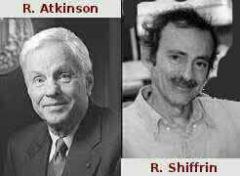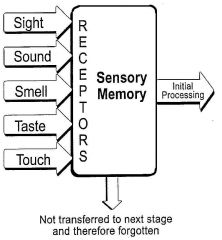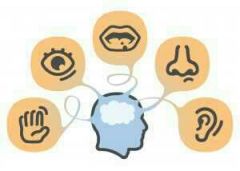![]()
![]()
![]()
Use LEFT and RIGHT arrow keys to navigate between flashcards;
Use UP and DOWN arrow keys to flip the card;
H to show hint;
A reads text to speech;
10 Cards in this Set
- Front
- Back
|
Who came up w/ (MSM) ?? (1968) |

Atkinson and shiffrin (1968) |
|
|
The Multi Store Model an idea proposed by Atkinson & Shiffrin which suggests ... |
(A&S) 1968 Memory is a flow of info through system.
(3 distinct stages) of the system; (SM), (STM), ( LTM) .
(Info passes through each stage) of the system in a (linear fashion / fixed pattern) |
|
|
Memory Process stage 1- SR |
(External stimuli) enter (SM) (uncoded form) where it registers (very brief period).
For the info to be transferred to the STM attention is vital as info in the SR can easily decay. |
|
|
MSM pic |

|
|
|
Memory Process stage 3 - (LTM) |
If info (well rehearsed,) it's able to (pass into the LTM). In LTM (Unlimited Capacity) (unlimited amount of info) may stay for as (long as a lifetime) through (semantic encoding). However, info may be forgotten bec memory traces can (Decay,) info can simply fade away (Interference) ‘new’ info causes confusion and interferes with the old info)(Retrieval failure) particular cues within the environment are not available causing retrieval failure.
|
|
|
The sensory register (SM) |

Stimuli (external environment) enters the memory system and registers in the (sensory store).
(First / most briefest memory store) holds info for fractions of a second after physical stimuli is no longer available
All info which is contained in the (LTM) must have passed through the (SR). |
|

Coding (SM)s |
Info stored (raw unprocessed form) w/ (separate sensory stores for different sensory input).(Iconic store) Visual (Echoic store) Auditory, (Haptic store) Tactile (Gustatory store) Taste (Olfactory store) Smell
(Crowder research sudy 1993) Stated that SR hold (visual info) (few milliseconds) but (Echoic store), (2 to 3 sec) supports idea (sensory info being codeed in different sensory store) |
|
|
CODING (SM)(RS) (Crowder 1993) |
(Crowder 1993) Stated that SR hold (visual info) (few milliseconds) but (Echoic store), (2 to 3 sec) supports idea (sensory info being codeed in different sensory store) |
|
|
Memory Process stage 2- STM |
(STM) stores approx (7 +/-2 items) (acoustic code) (15-30 sec) therefore info easily forgotten as (info is lost) after 30 secs if (not rehearsed).
Memories from STM either lost bec of (Displacement) - new info pushes old info out. Or by (Decay) because they simply fade away |
|
|
Capacity of the SR |
Capacity is very large - with the information being contained unprocessed highly detailed ever changing form Research study sperling 1970 Procedure Flashed 3*4 grid of letters for 1/2 fractions of a second asked p's to recall the letters of one row info would fade very quickly sounded different tones (high,med,low) to indicate which row to call (1st 2st 3nd) |

